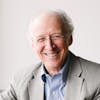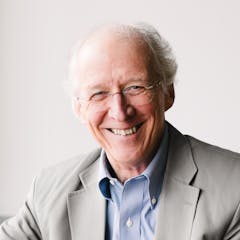Pursue Mature Manhood and Womanhood
I took a few days recently to put my sermons on Ruth into a small book that may be called A Sweet and Bitter Providence. One of the spillovers from that effort was a renewed sense of how much we need great stories that embody great truths.
Ruth and Boaz is a great love story. When a story is permeated with God and his vision of life, we get to watch truth happen. The beauty of truth is not explained to us. It is lived before us.
God’s truth concerning manhood and womanhood is beautiful. Most of us are so sinful that we don’t model it well. So we need teaching and we need storytelling. And we need Christ to forgive us and renew us and send us back again and again into this truth. He is faithful. Ruth’s story is a special gift to us this Christmas. It has so many levels of meaning. Manhood and womanhood is not the only one. But it is one.
The rest of this article is an excerpt from the conclusion of A Sweet and Bitter Providence.
The egalitarian impulses of the last thirty years have not made us better men and women. In fact, they have confused millions. What average man or woman today could answer a little boy’s question: “Daddy, what does it mean to grow up and be a man and not a woman?” Or a little girl’s question: “Mommy, what does it mean to grow up and be a woman and not a man?”
Who could answer these questions without diminishing manhood and womanhood into mere biological mechanisms? Who could articulate the profound meanings of manhood and womanhood woven differently into a common personhood created differently and equally in the image of God? James Dobson puts it like this: “At the heart . . . is the issue of what is a man? If you try to reduce that issue to just: what is a caring person, you make a good point but miss a crucial created element called manhood that is relevant.”1 Not asking the question about the essence of male and female personhood confuses everyone—especially the children.
And this confusion hurts people. It is not a small thing. Its effects are vast. I agree with Dobson when he says, “Feminist resistance to making manhood and womanhood significant in behavior and role determination is partner to some of the most painful social and spiritual issues of our day.”2
When manhood and womanhood are confused at home, the consequences are deeper than may show up in a generation. There are dynamics in the home that direct the sexual preferences of the children and shape their concept of manhood and womanhood. Especially crucial in the matter of sexual preference is a father’s firm and loving affirmation of a son’s masculinity and a daughter’s femininity.3 The father must be a man. But how can this kind of manly affirmation be cultivated in an atmosphere where role differences between masculinity and femininity are constantly denied or diminished for the sake of gender-leveling and sex-blindness?
What we all need is solid teaching from the Bible about the differences God intends between men and women.4 But we also need stories. Great stories. We need to see manhood and womanhood in action—in real life and fiction and history. The story of Ruth and Boaz is the kind of story that can awaken and feed the masculine and feminine soul in ways that we cannot articulate.
I encourage you to be like a dolphin in the sea of our egalitarian, gender-leveling culture. Don’t be like a jellyfish. The ocean of secularism that we swim in (including much of the church) drifts toward minimizing serious differences between manhood and womanhood. The culture swings back and forth as to whether women are mainly sex objects or senior vice presidents. But rarely does it ponder the biblical vision that men are called to humbly lead and protect and provide, and women are called to come in alongside with their unique gifts and strengths and help the men carry through the vision.
I pray that you will be stirred up by Ruth and Boaz to pursue mature manhood and womanhood. More is at stake than we know. God has made marriage the showcase of his covenant love where the husband models Christ and the wife models the Church (Ephesians 5:21–33).
* * *
This December, John Piper is re-reading his four Ruth poems from 1995 to his congregation during the four weekends of Advent.
-
Focus on the Family, May, 1993, vol. 17, No. 5, p. 7. Final italics original. ↩
-
Ibid. ↩
-
Gerald P. Regier, “The Not-So-Disposable Family,” Pastoral Renewal, Vol. 13, No. 1, July–August, 1988, p. 20. ↩
-
I have tried to think this through in a small way in What’s the Difference? Manhood and Womanhood Defined According to the Bible (Wheaton: Crossway Books, 1990). See also, John Piper and Wayne Grudem, Recovering Biblical Manhood and Womanhood (Wheaton: Crossway Books, 1991), and Wayne Grudem, Evangelical Feminism and Biblical Truth (Sisters, Oregon: Multnomah Press, 2004). See also www.cbmw.org. ↩




